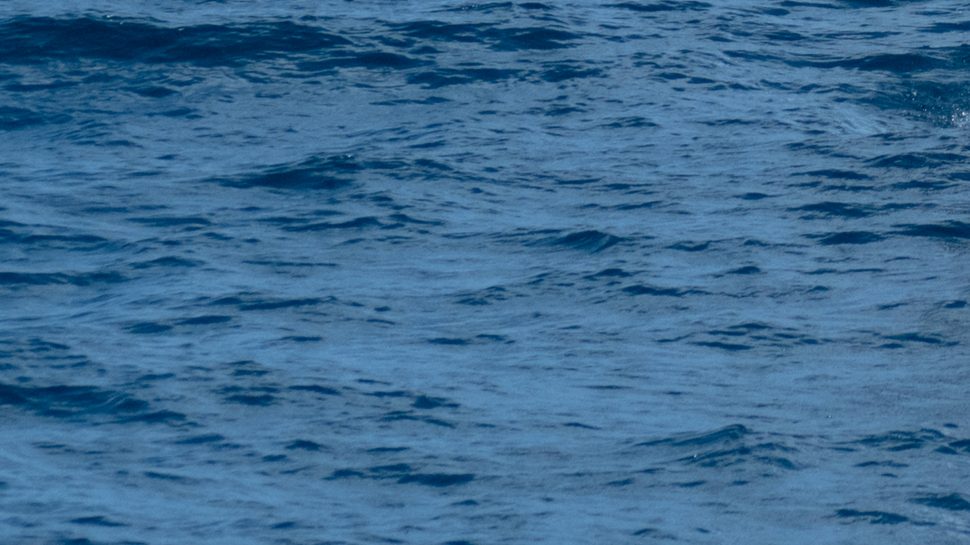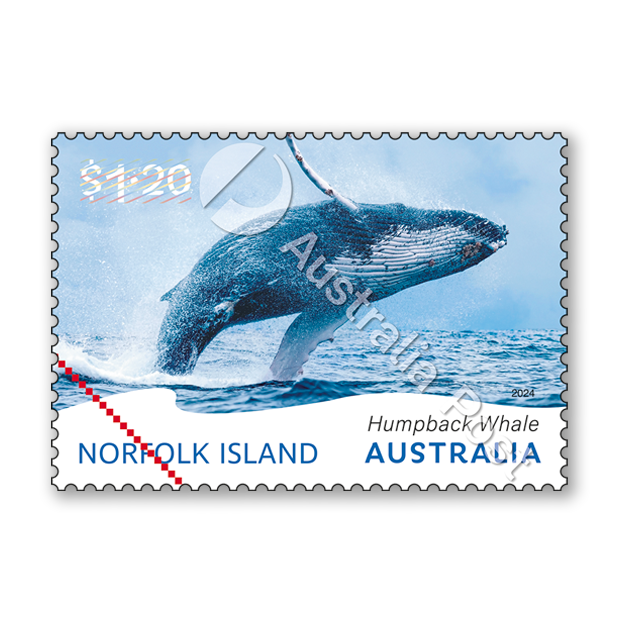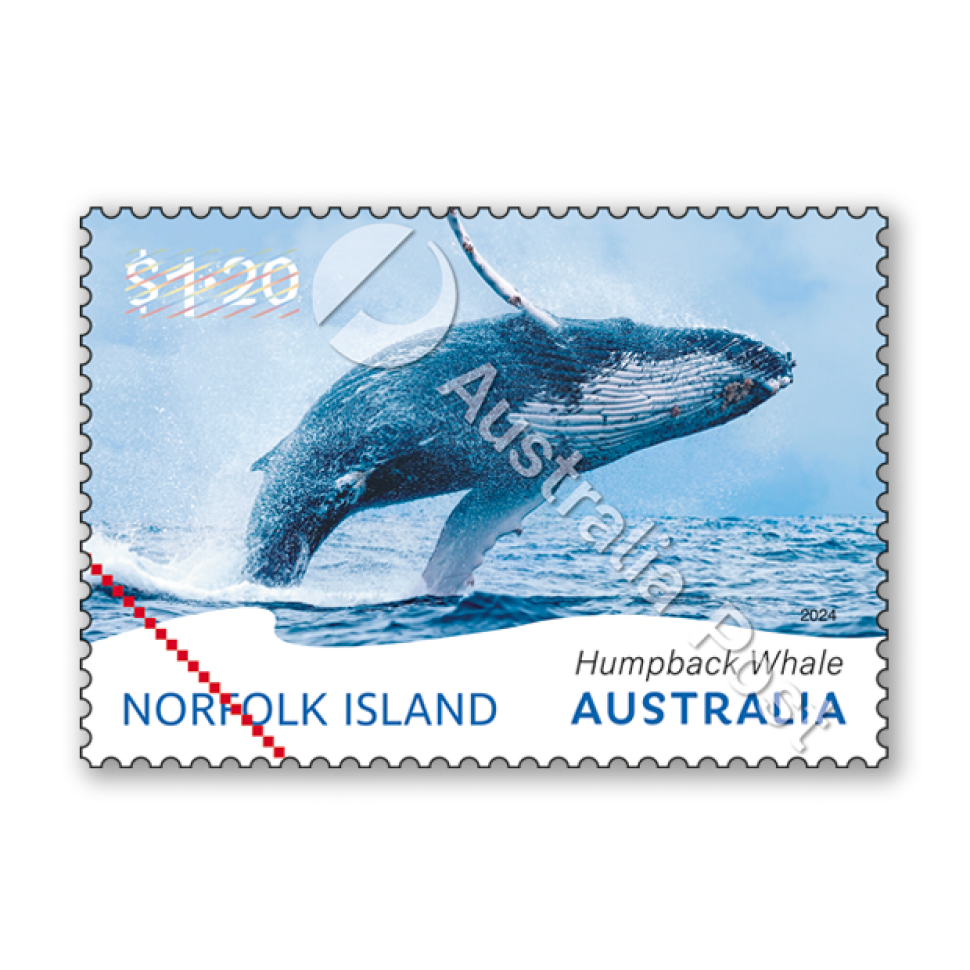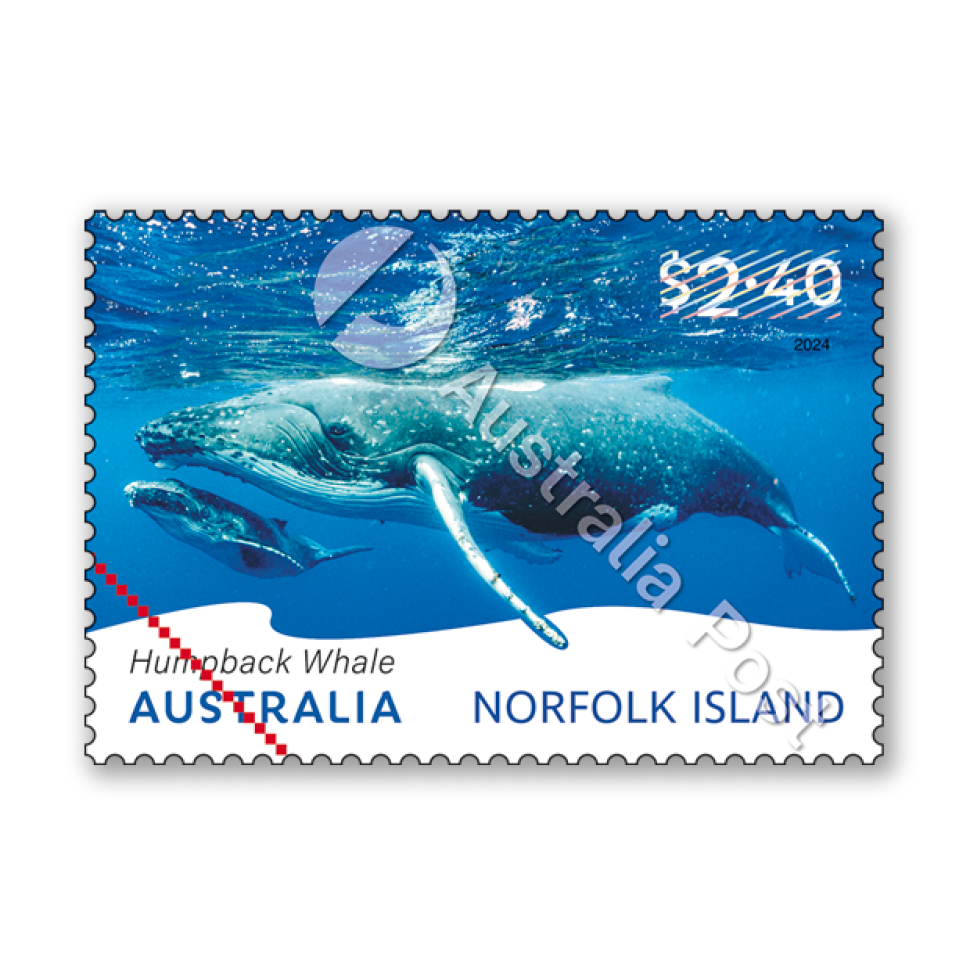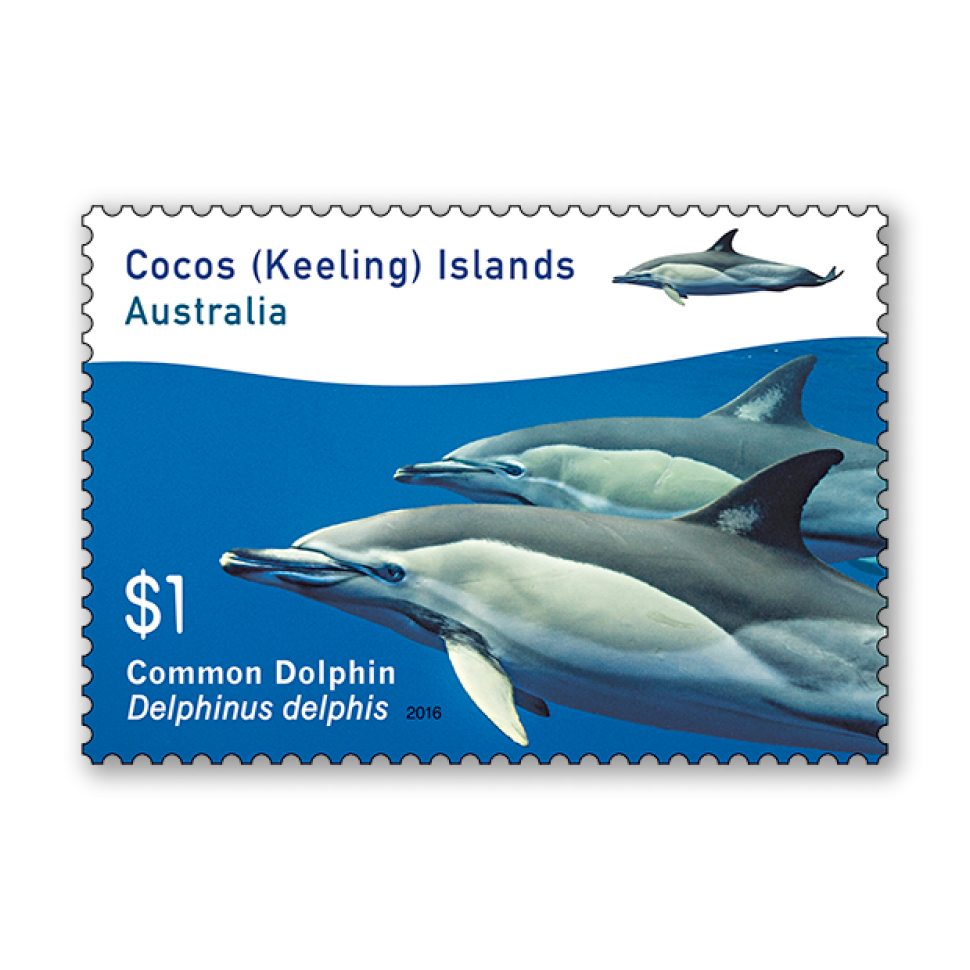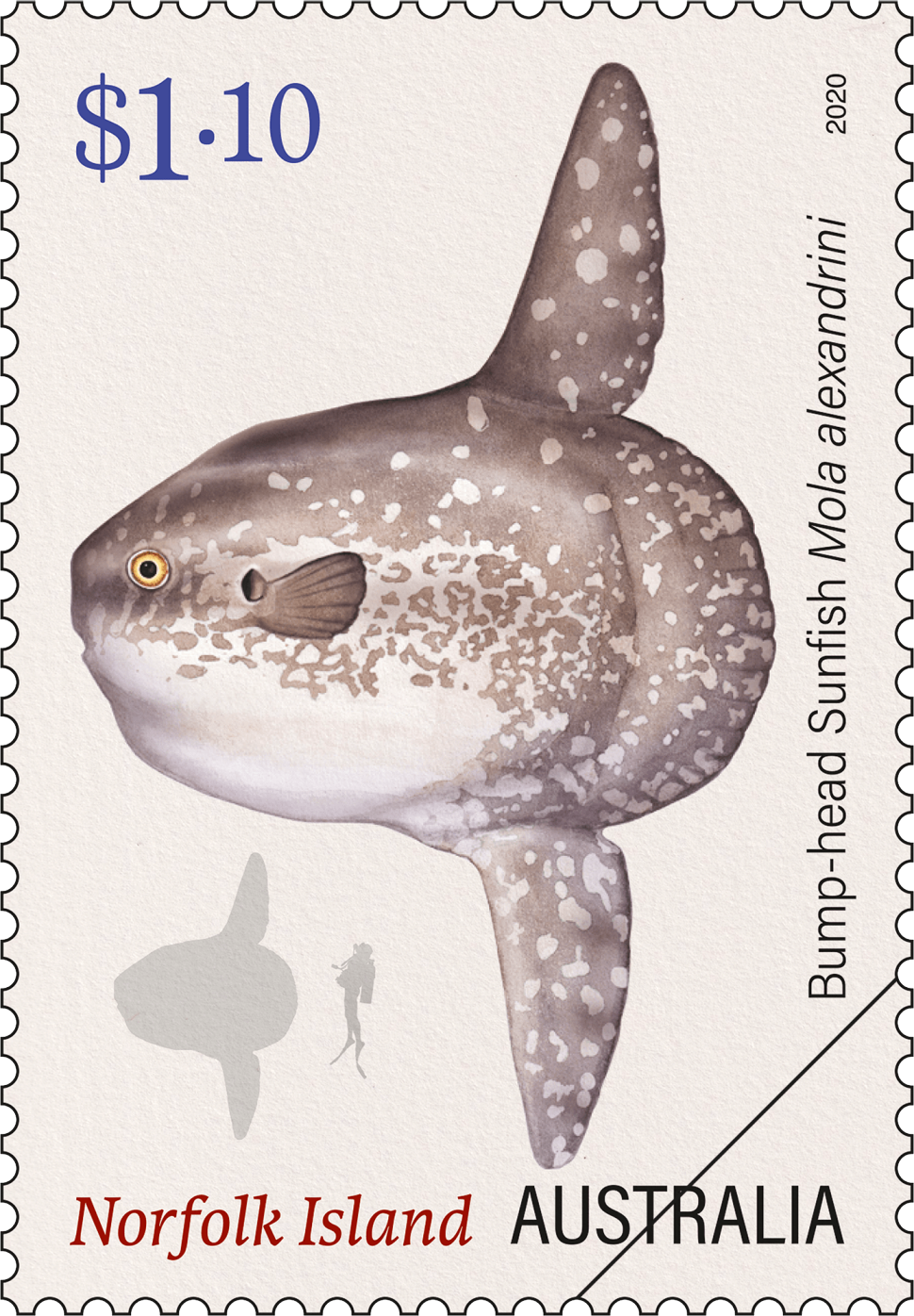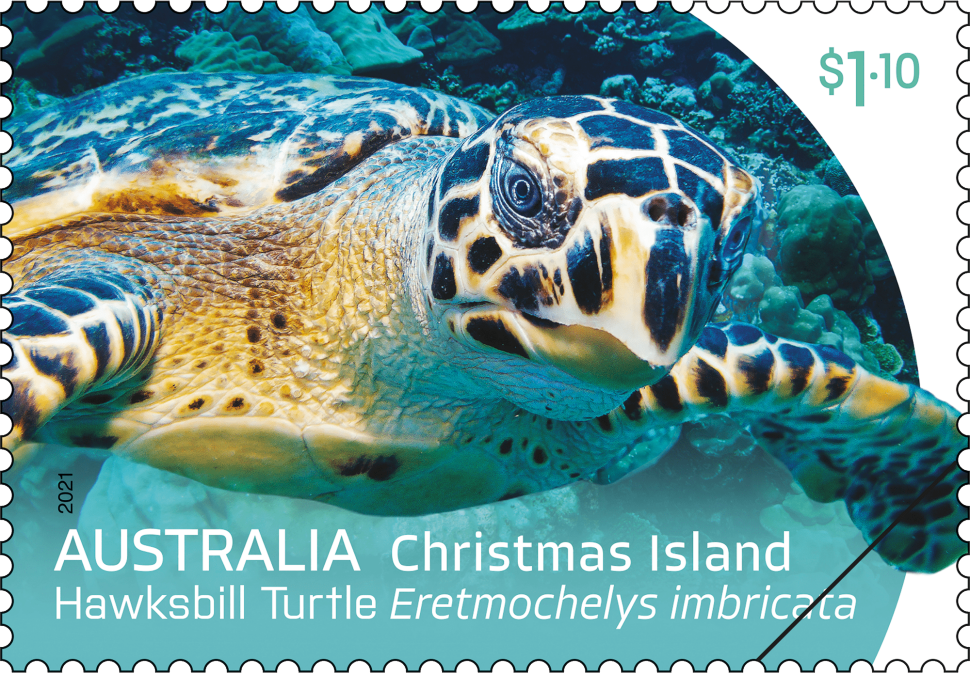Overview
Several species of whale frequent the waters around Norfolk Island, but the most significant in terms of the island’s history is the Humpback Whale (Megaptera novaeangliae). Adult Humpbacks range in length from 14 to 17 metres and weigh up to 40 metric tonne (44 short ton). The species is notable for the complex song of male adults and for its spectacular breaching behaviour, where animals leap through the surface of the water, making the species popular with whale watchers. The humpback has a distinctive body shape, with long pectoral fins and tubercles on its head.
Valued for its rich oil, the species was hunted almost to extinction in the 19th and early 20th centuries. Today, Humpback Whales are protected, and whale watchers on Norfolk Island can observe the annual migration of the species as animals travel thousands of kilometers from feeding grounds in Antarctic waters to breed and calve in the warm tropical seas around New Caledonia.
While in Antarctica, during December to mid-March, Humpback Whales feed on krill to sustain them for their long journey north. Then from mid-March to early April, and depending on sex and maturity, the whales leave in groups at different times. These groups follow routes up the coast of eastern and western Australia and eastern New Zealand. They will breed and give birth in the subtropical and tropical waters of Australia and the South Pacific Islands. Other groups from Antarctica travel up the east and west coast of South America and Africa.
On average, Humpback Whales can travel approximately 1,500km each month; some will rest in bays and inlets on their journey north. Usually, the first whales spotted along the coast of Australia and New Zealand are around May.
Photographs: Paul Wolf/stock.adobe.com ($1.20 stamp), Chris/stock.adobe.com ($2.40 stamp), Yann Hubert/Shutterstock.com (minisheet).
Technical specifications
- Issue date
- 8 January 2024
- Issue withdrawal date
- 1 August 2024
- Denomination
- $1.20 x 1, $2.40 x 1
- Stamp & product design
- Jo Muré, Australia Post Design Studio
- Paper: gummed
- Tullis Russell 104gsm Red Phosphor
- Printer
- Southern Impact
- Printing process
- Offset lithography
- Stamp size (mm)
- 37.5 x 26
- Minisheet (mm)
- 135 x 80
- Perforations
- 13.86 x 14.6
- Sheet layout
- Module of 50 (2 x 25 no design)
- FDI Postmark
- Norfolk Island, NSW 2899
- FDI withdrawal date
- 6 February 2024
$2.40 Humpback Whale with calf
The Humpback Whale breeds and gives birth in the warmer waters of the subtropical and tropical waters of Australia and the South Pacific Islands, after following the routes up the coast of eastern and western Australia and eastern New Zealand from Antarctica.
The stamp photograph is by Chris/stock.adobe.com
Shop our stamp collectables
Set of Gummed Stamps:
Set of Norfolk Island Humpback Whale Gummed Stamps
This set of stamps presents the two stamps from the Norfolk Island Humpback Whale stamp issue.
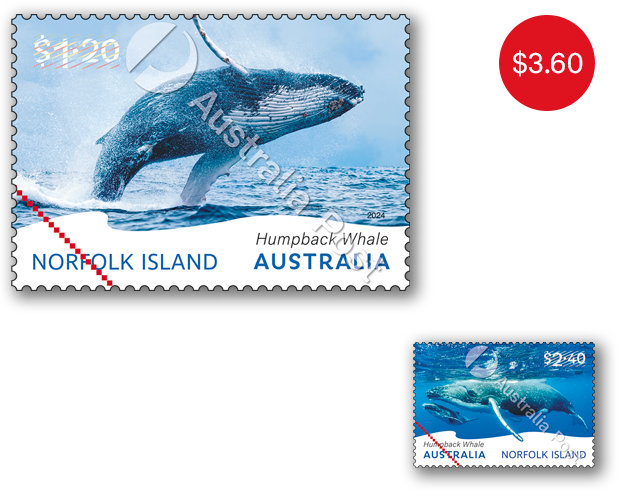
Minisheet:
Norfolk Island Humpback Whale Minisheet
This Norfolk Island Humpback Whale minisheet from the stamp issue presents the two stamps against the full image associated with the $1.20 stamp design.
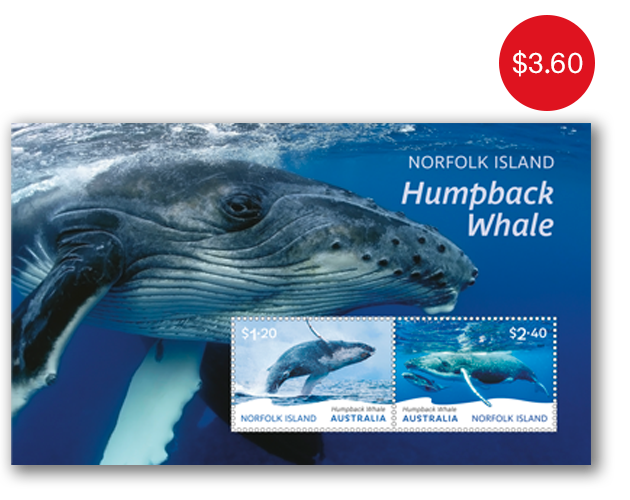
First Day Cover (gummed):
Norfolk Island Humpback Whale First Day Cover (Gummed)
This Norfolk Island Humpback Whale gummed first day cover features the two stamps from the stamp issue with first day of issue postmark.
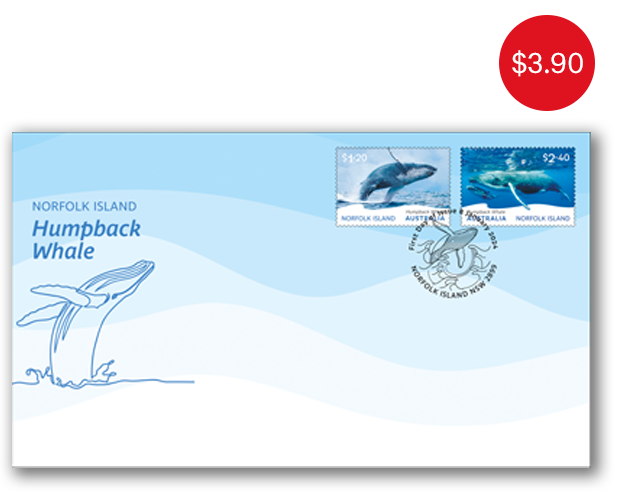
First Day Cover (minisheet):
Norfolk Island Humpback Whale First Day Cover (Minisheet)
This Norfolk Island Humpback Whale minisheet first day cover features the minisheet from the stamp issue with first day of issue postmark.
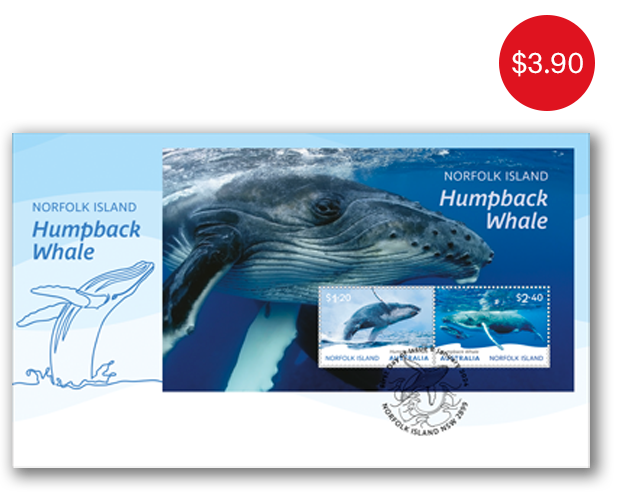
- Set of Gummed Stamps
- Minisheet
- First Day Cover (gummed)
- First Day Cover (minisheet)
Additional collectables:
This content was produced at the time of the stamp issue release date and will not be updated.
